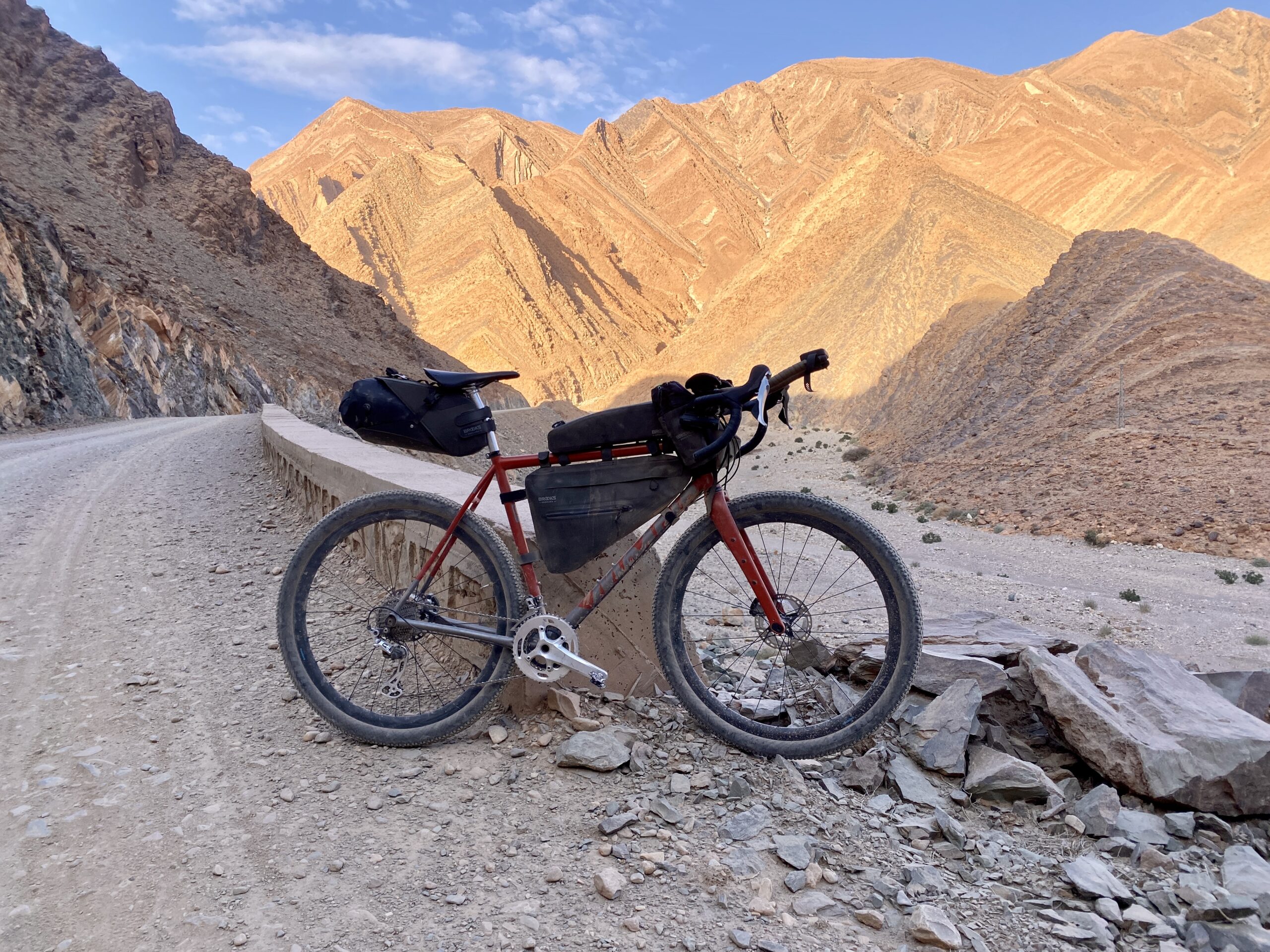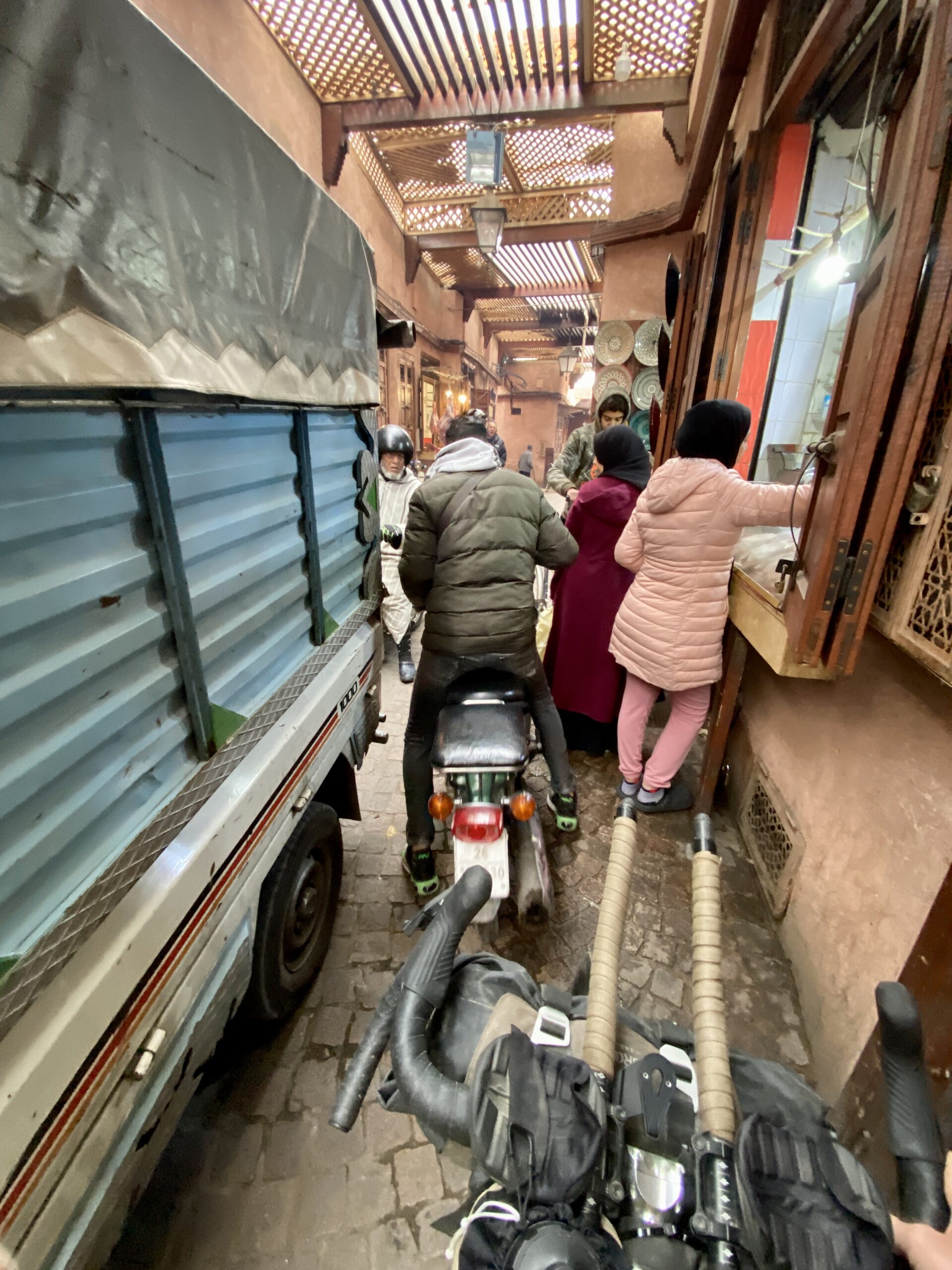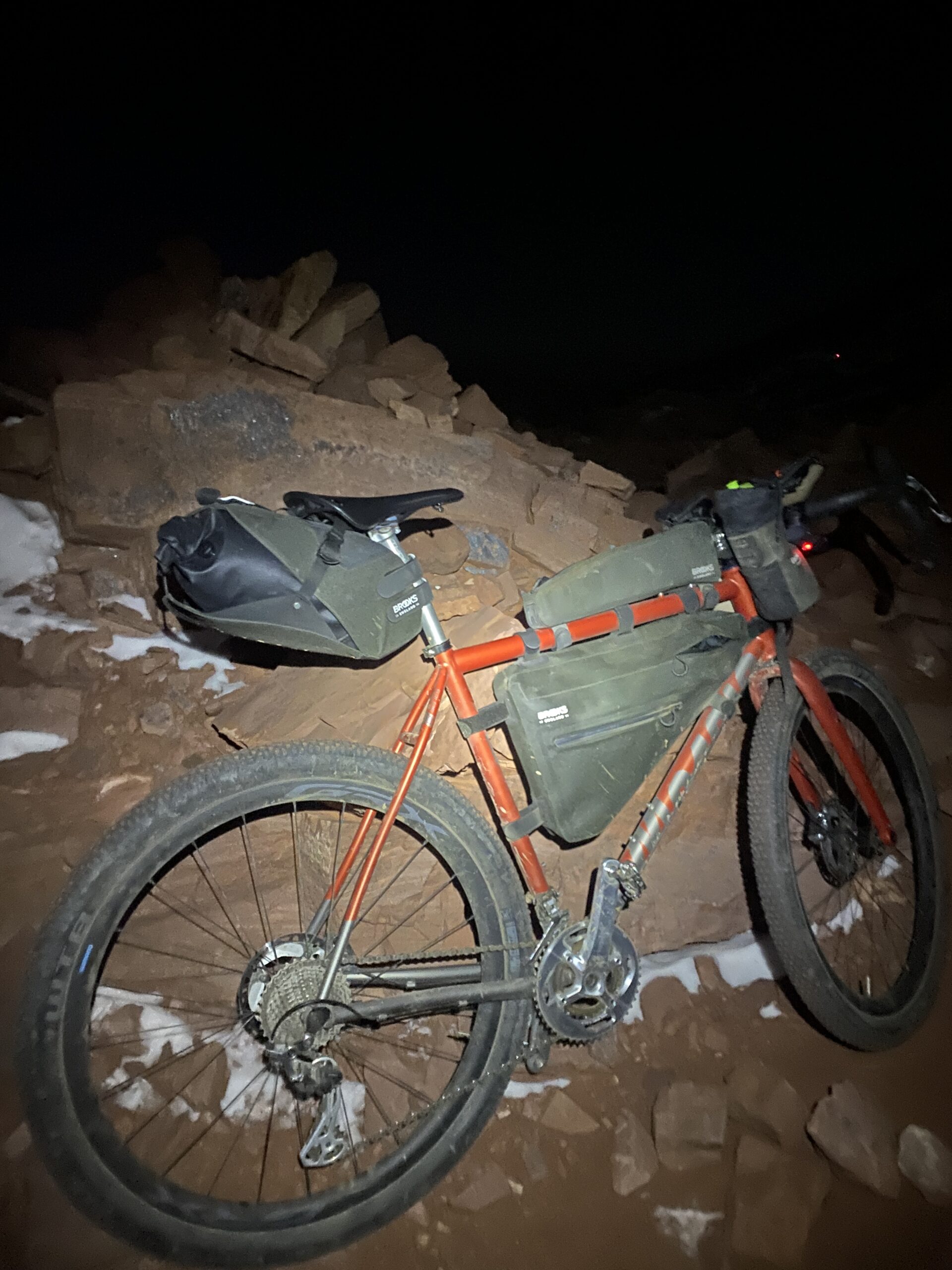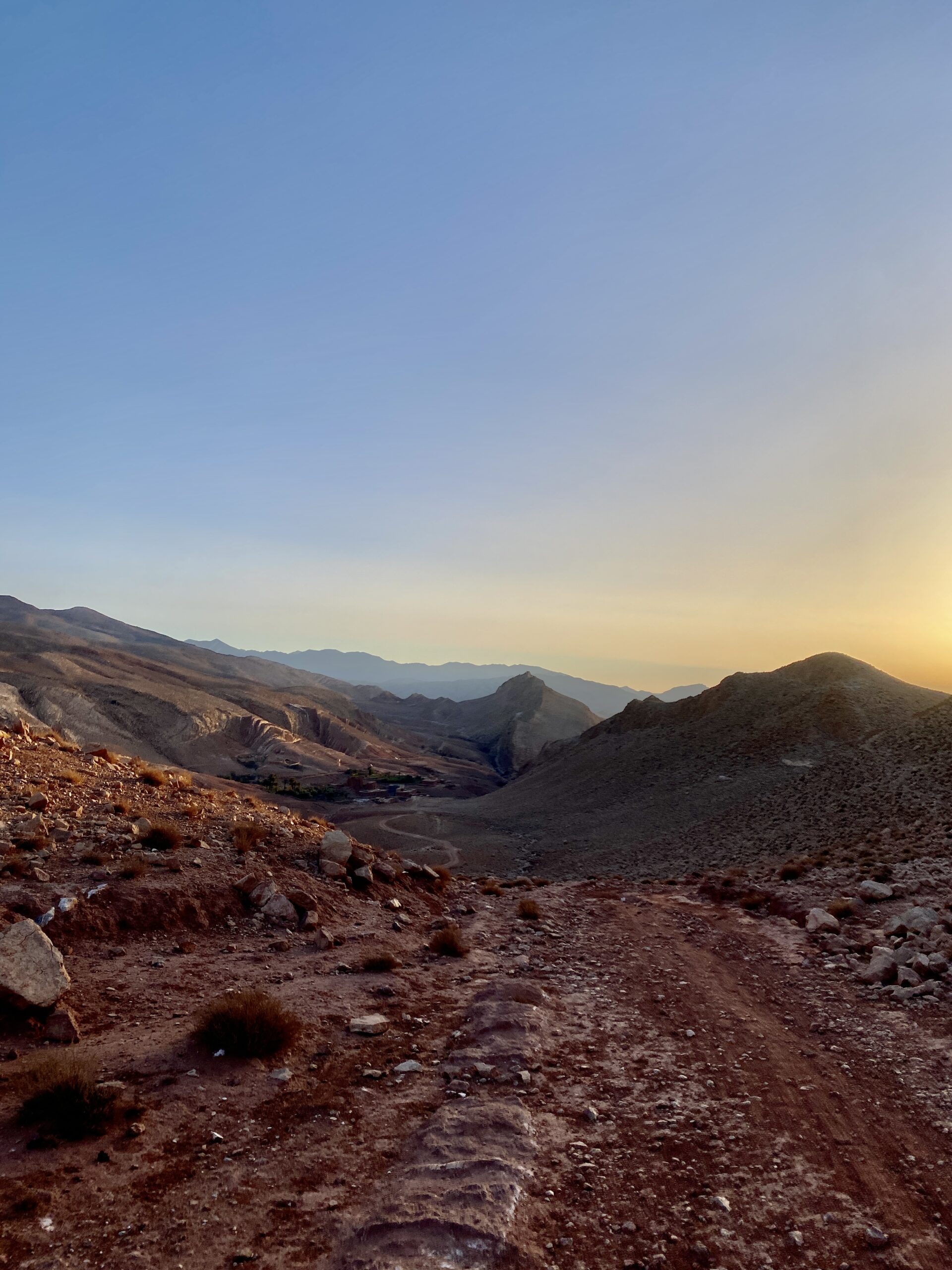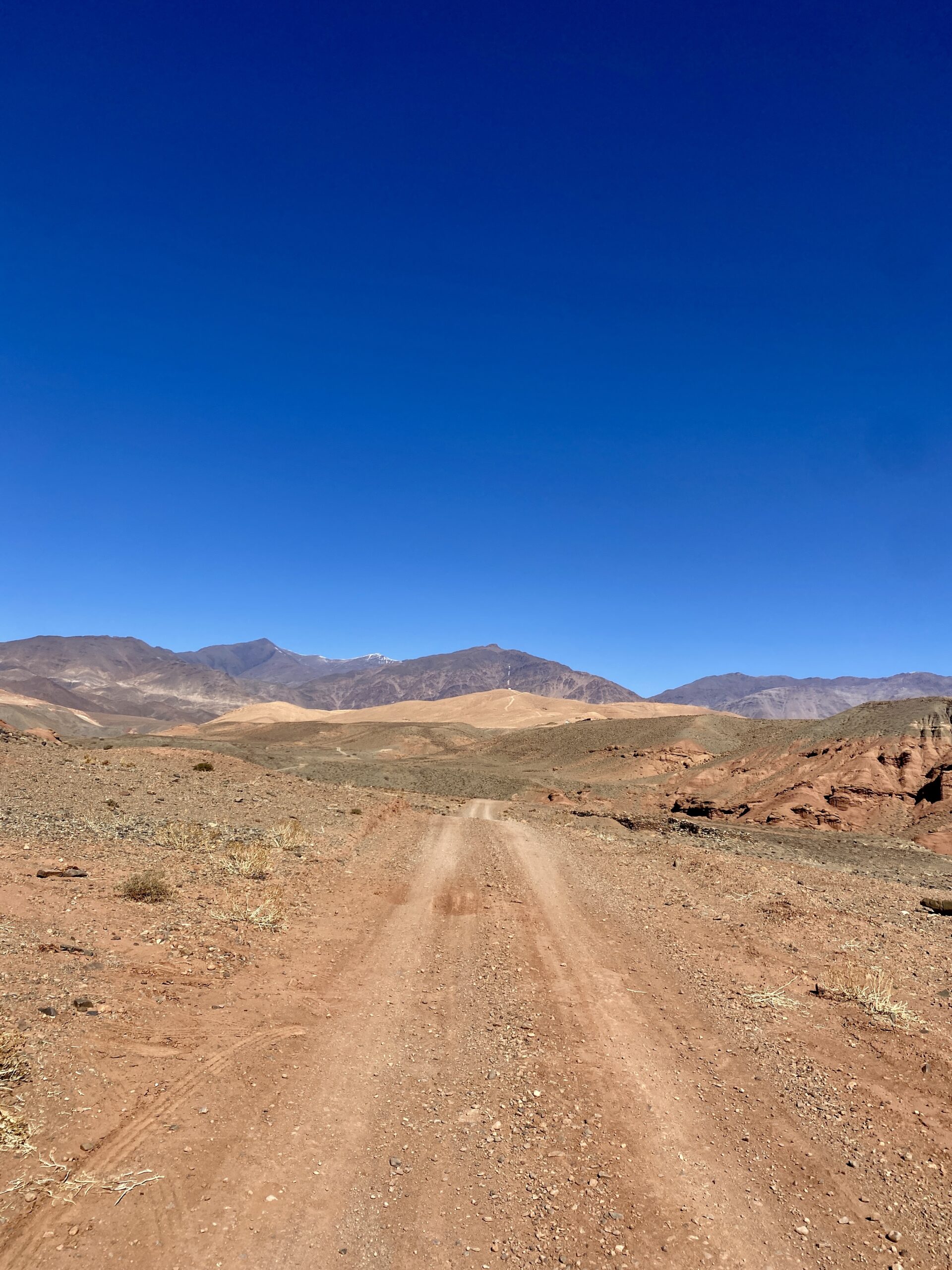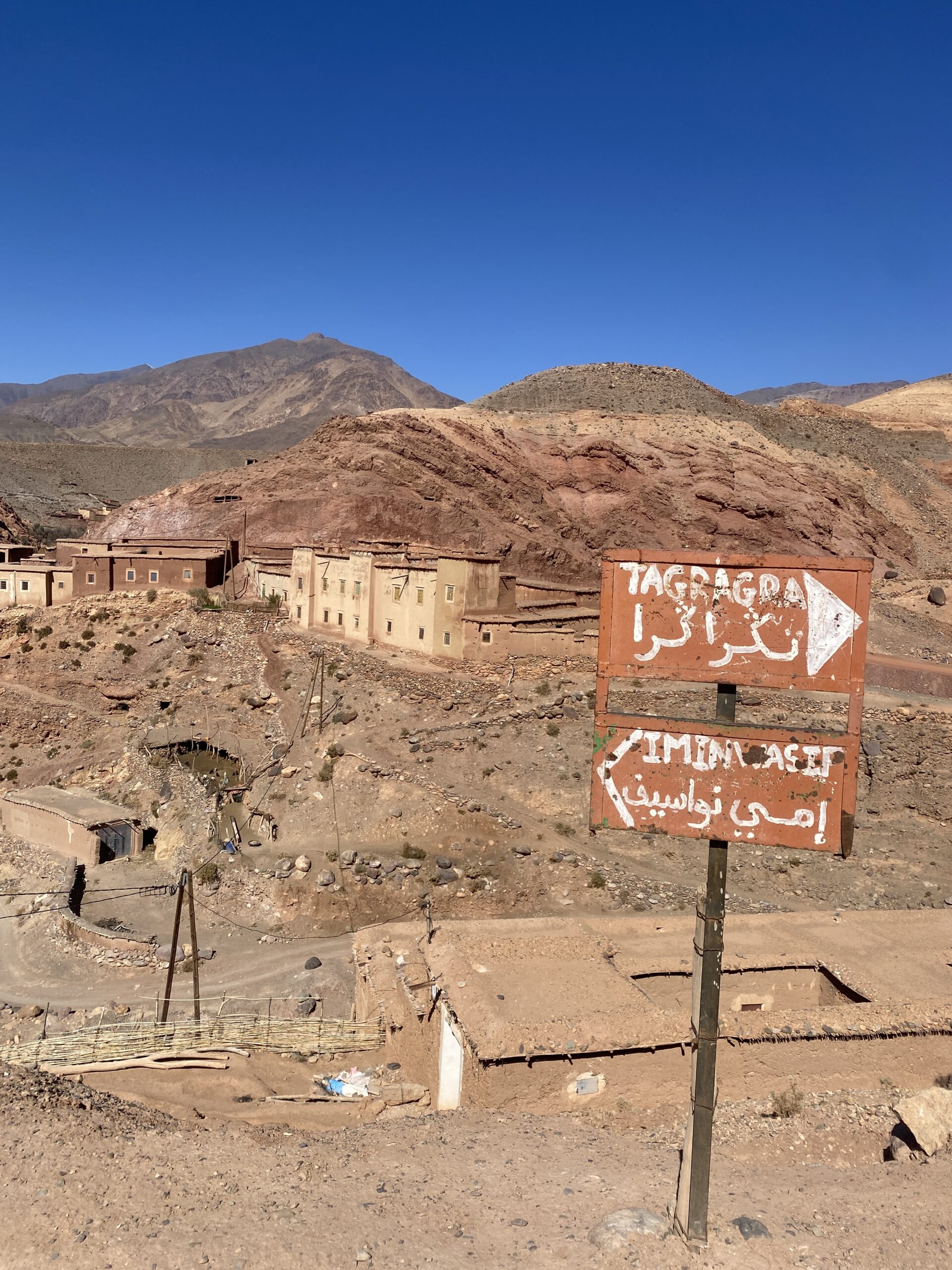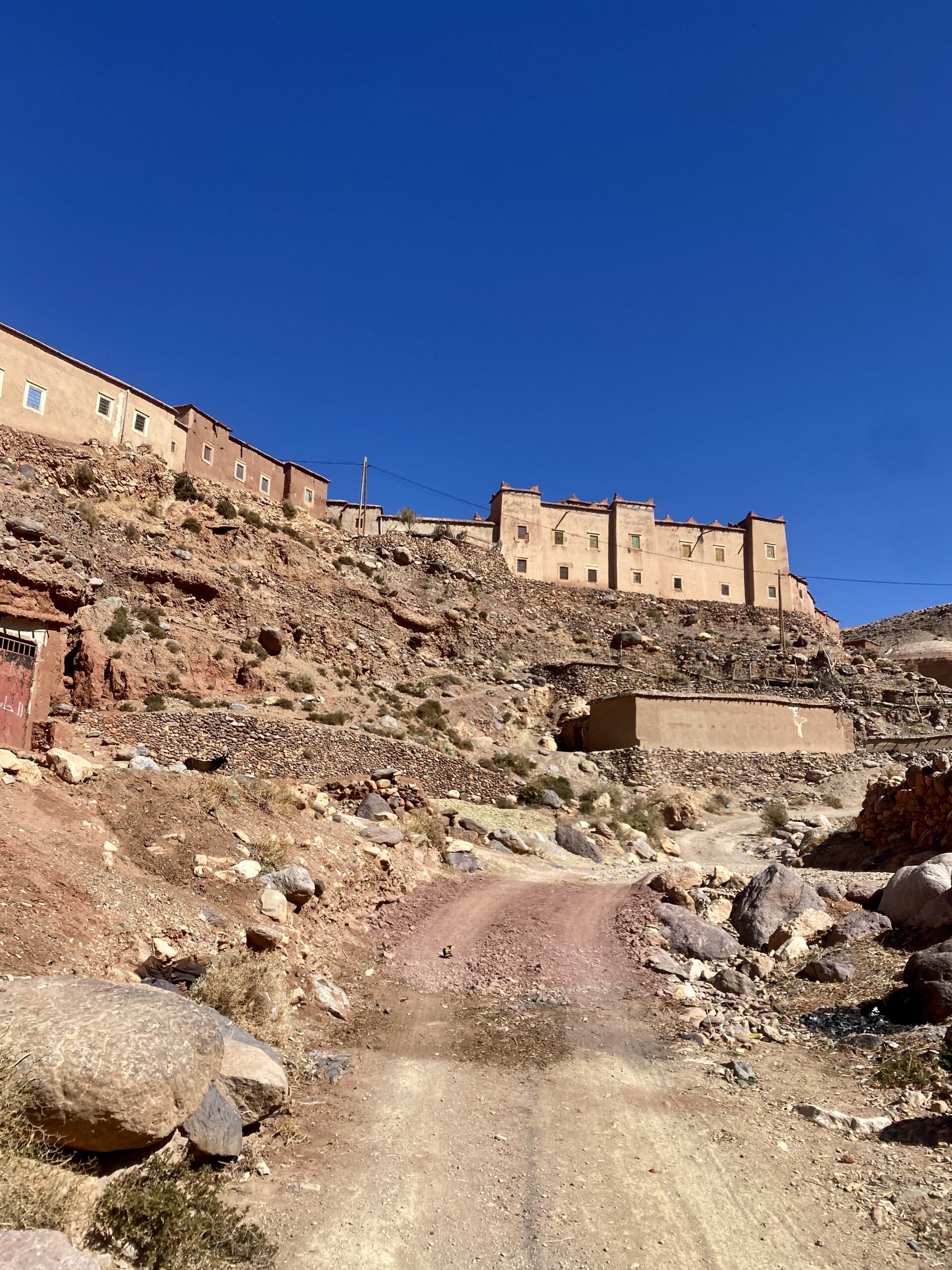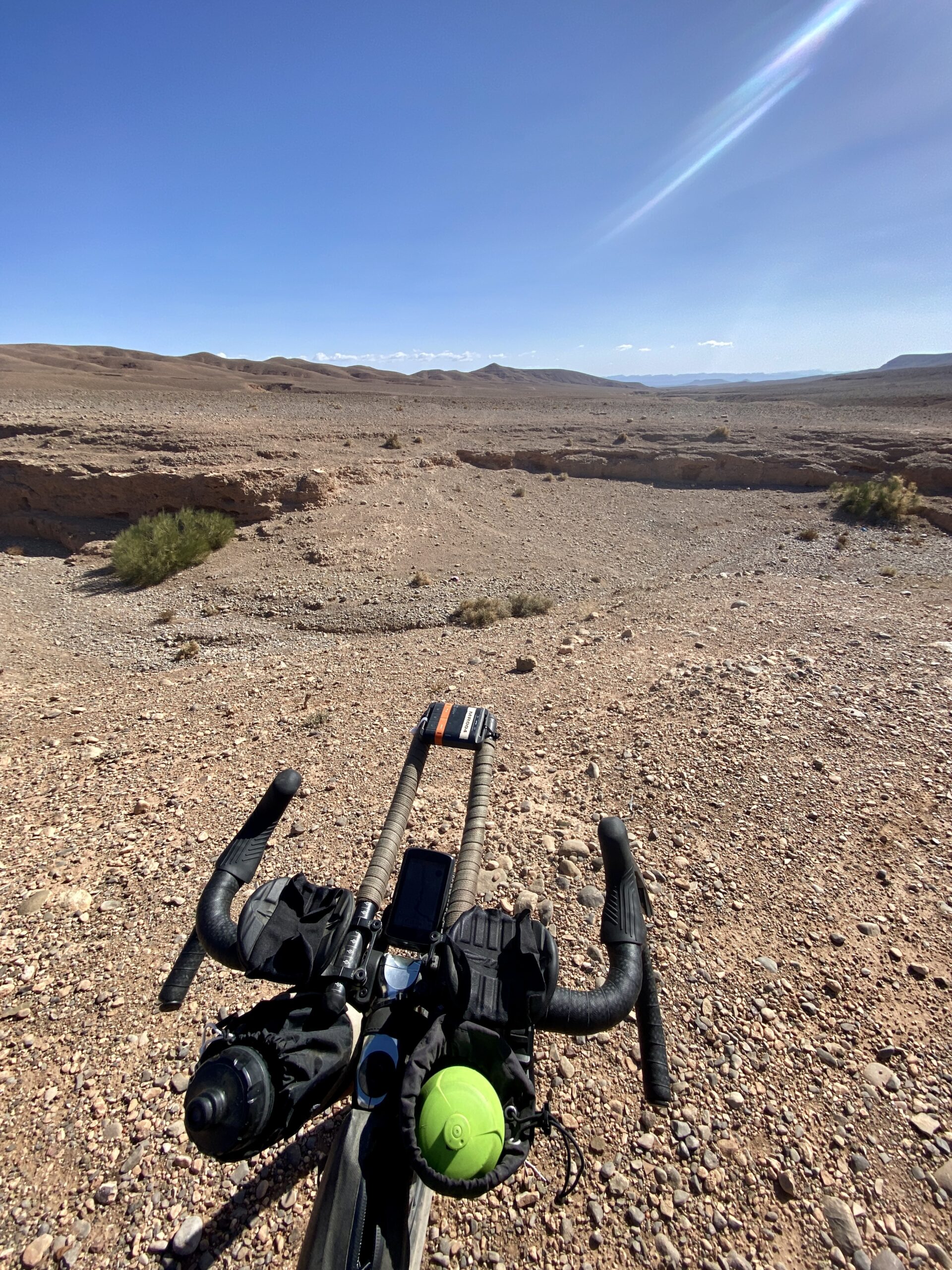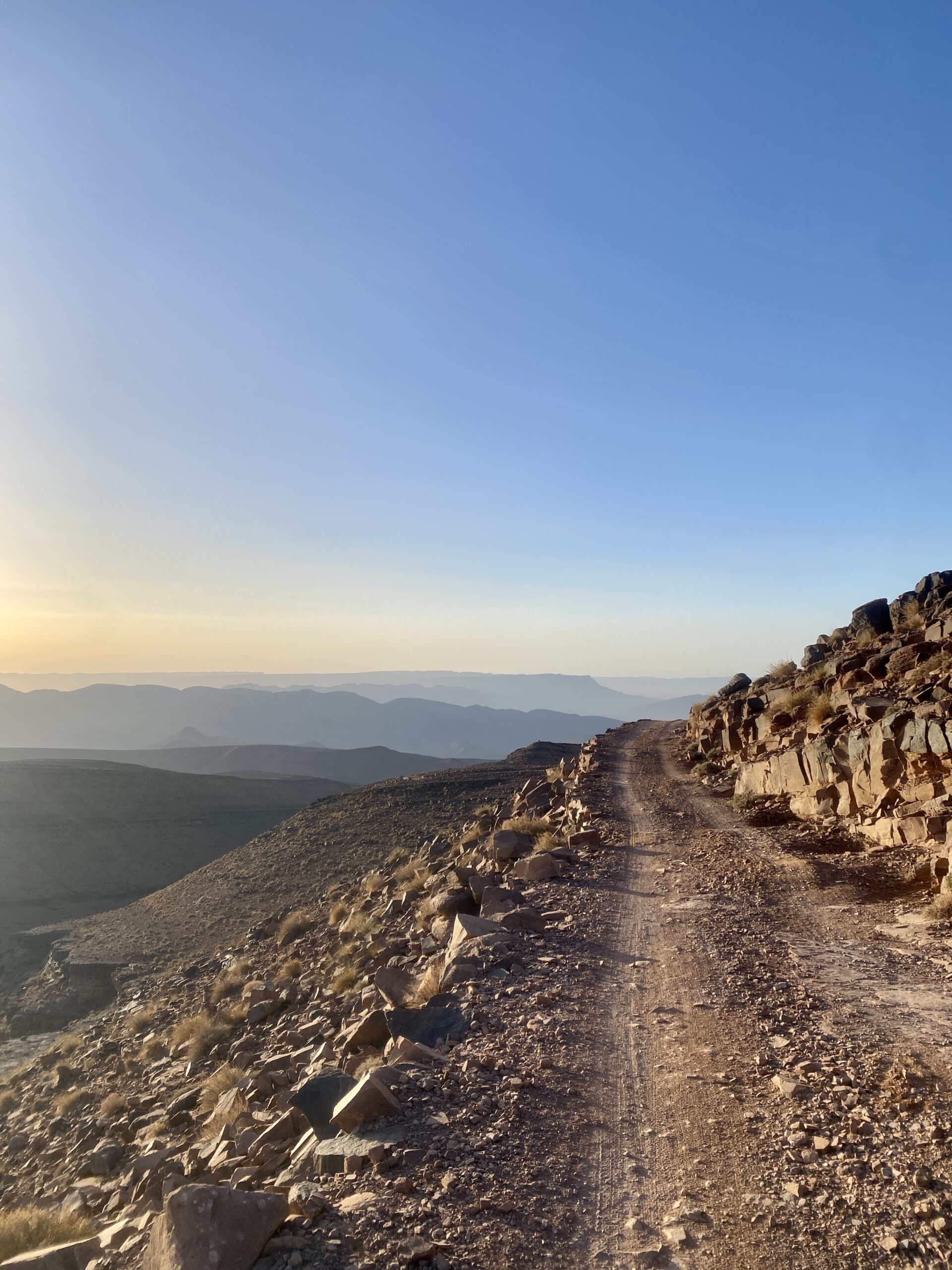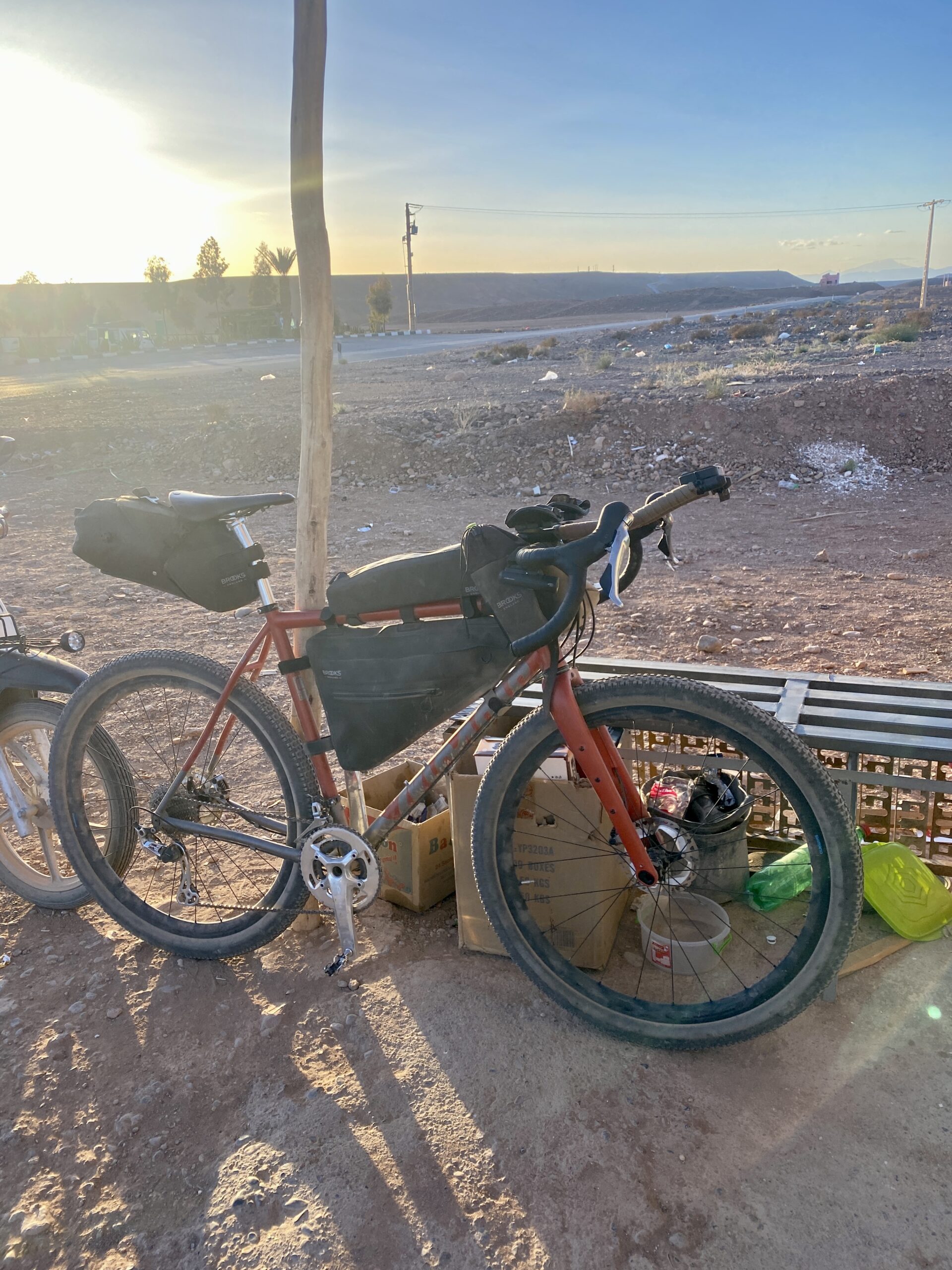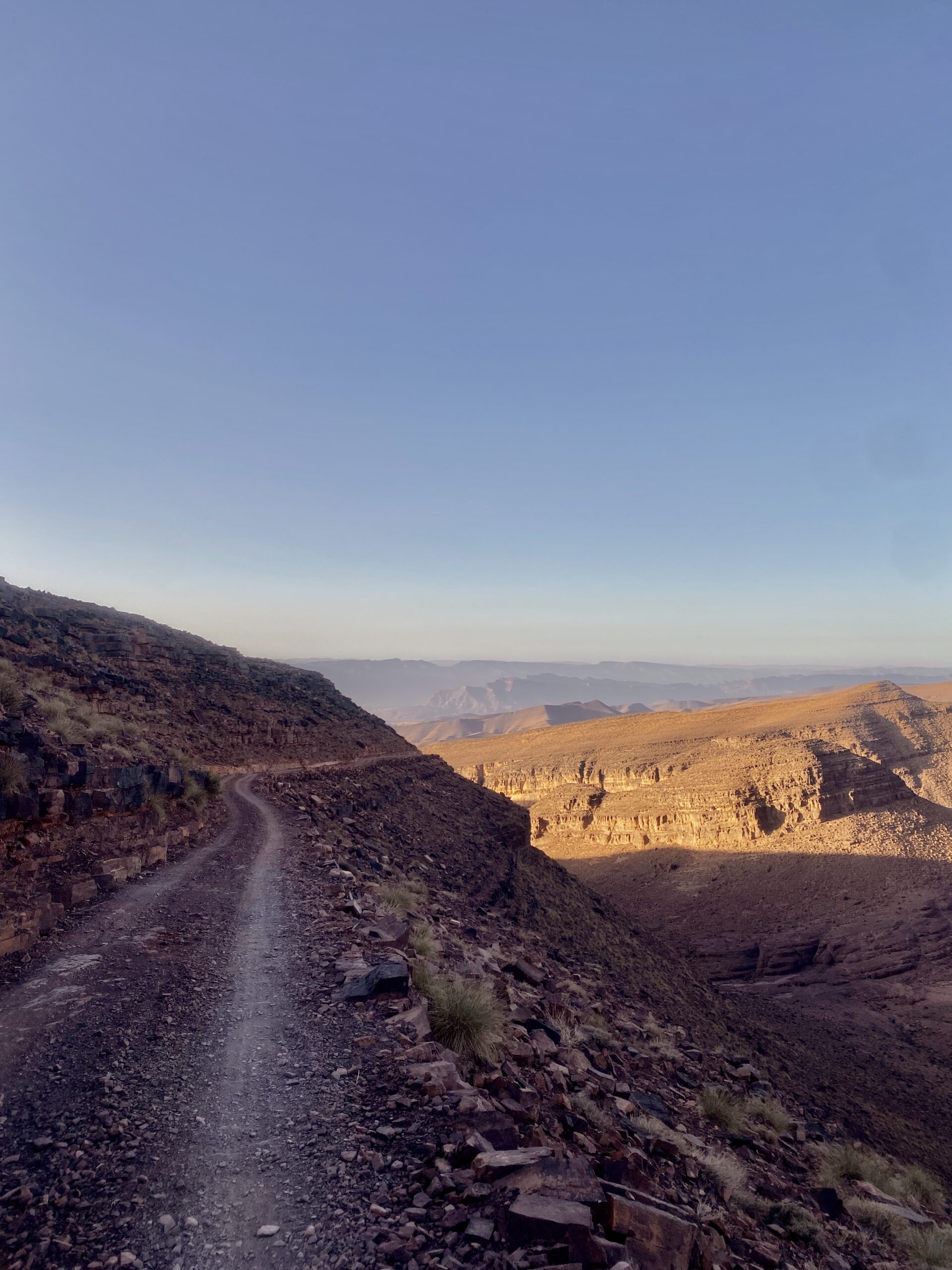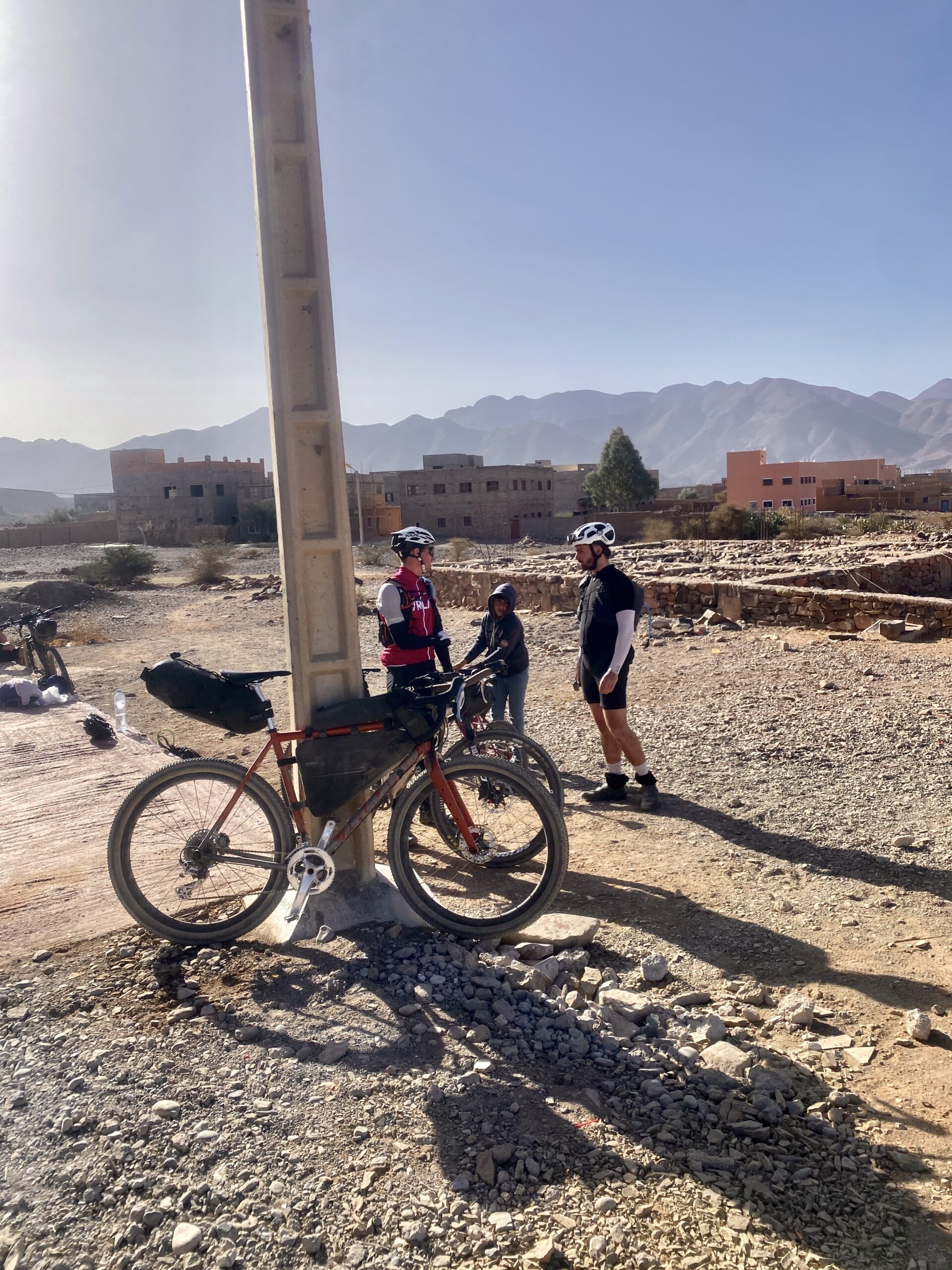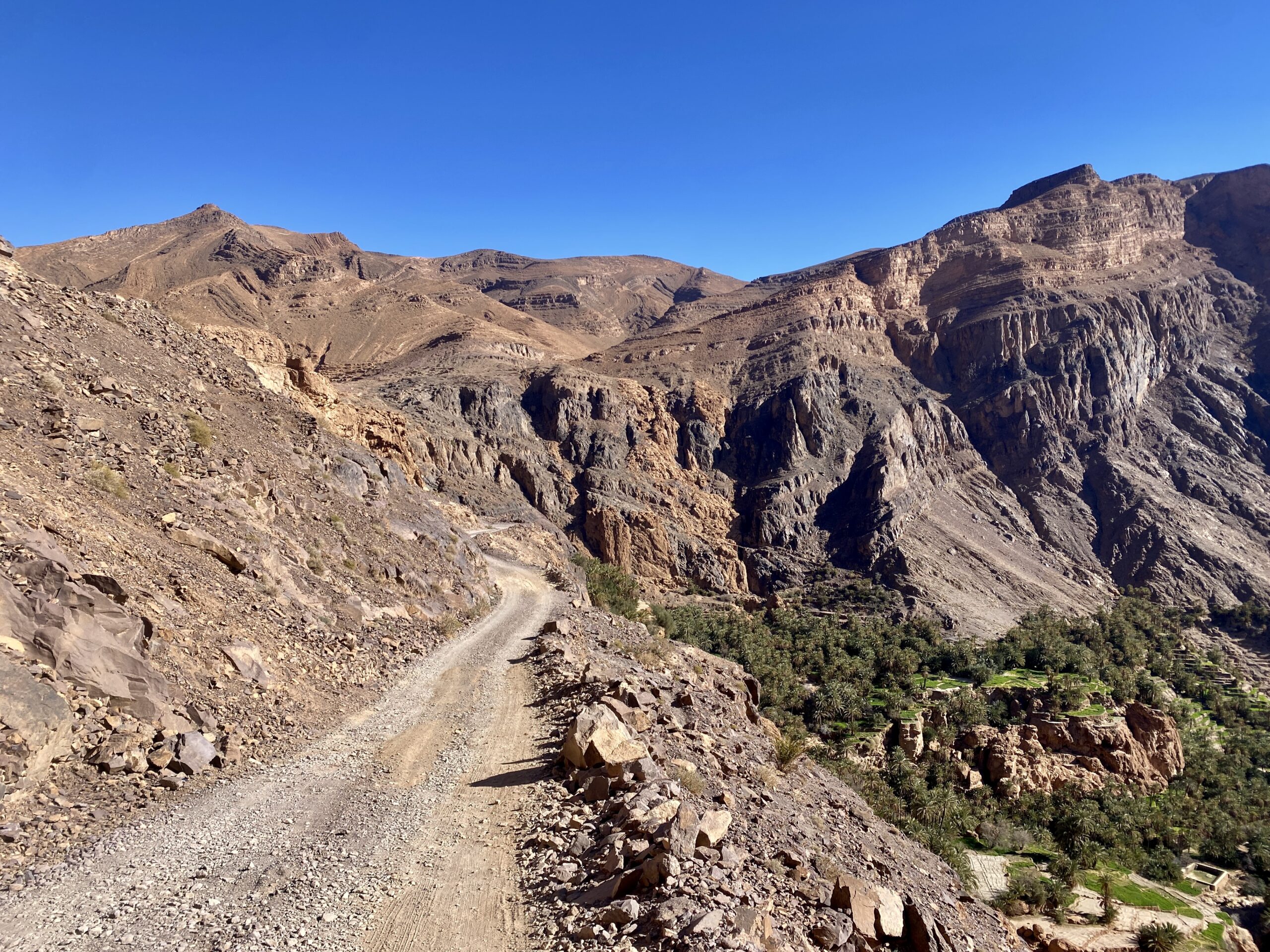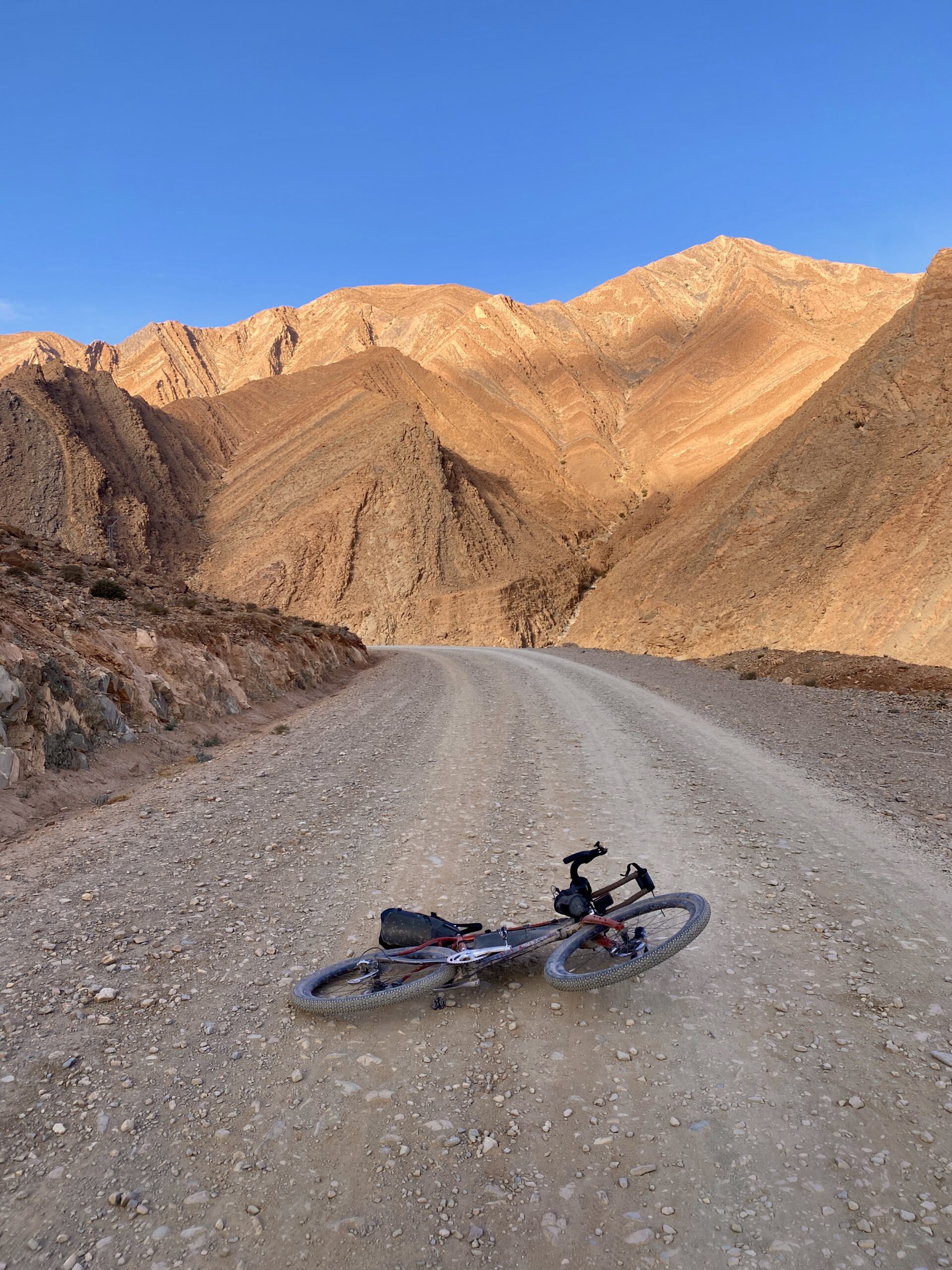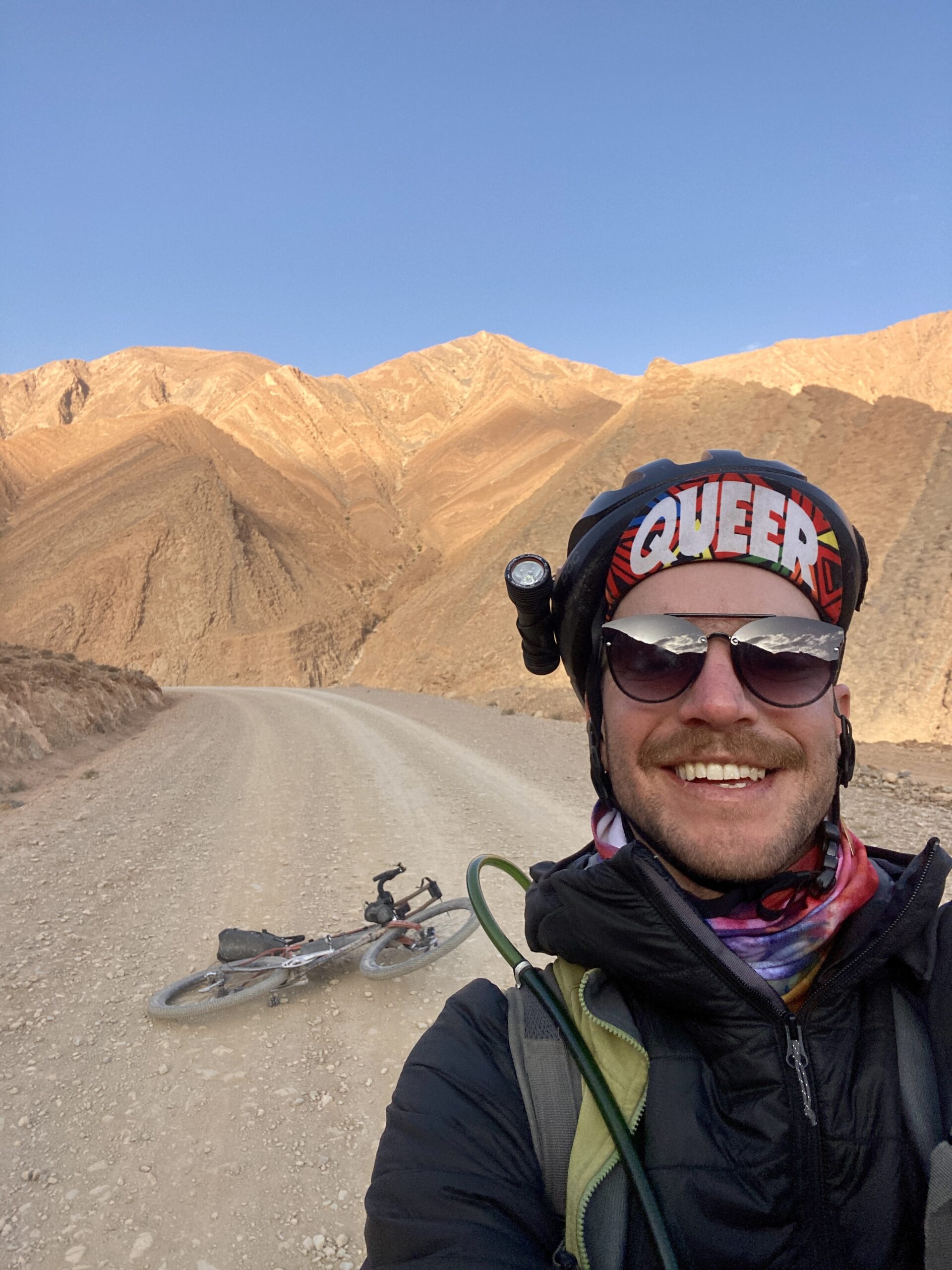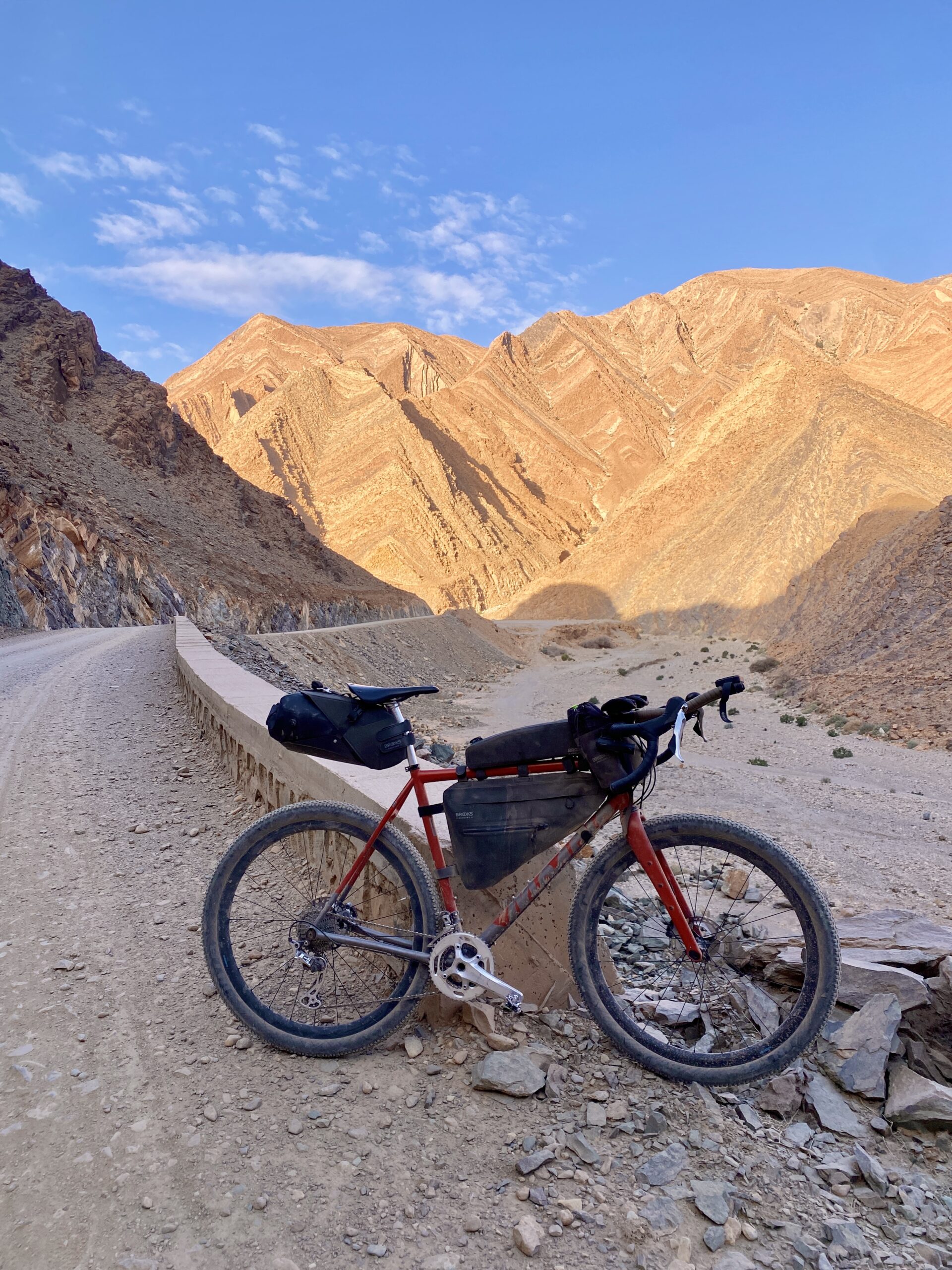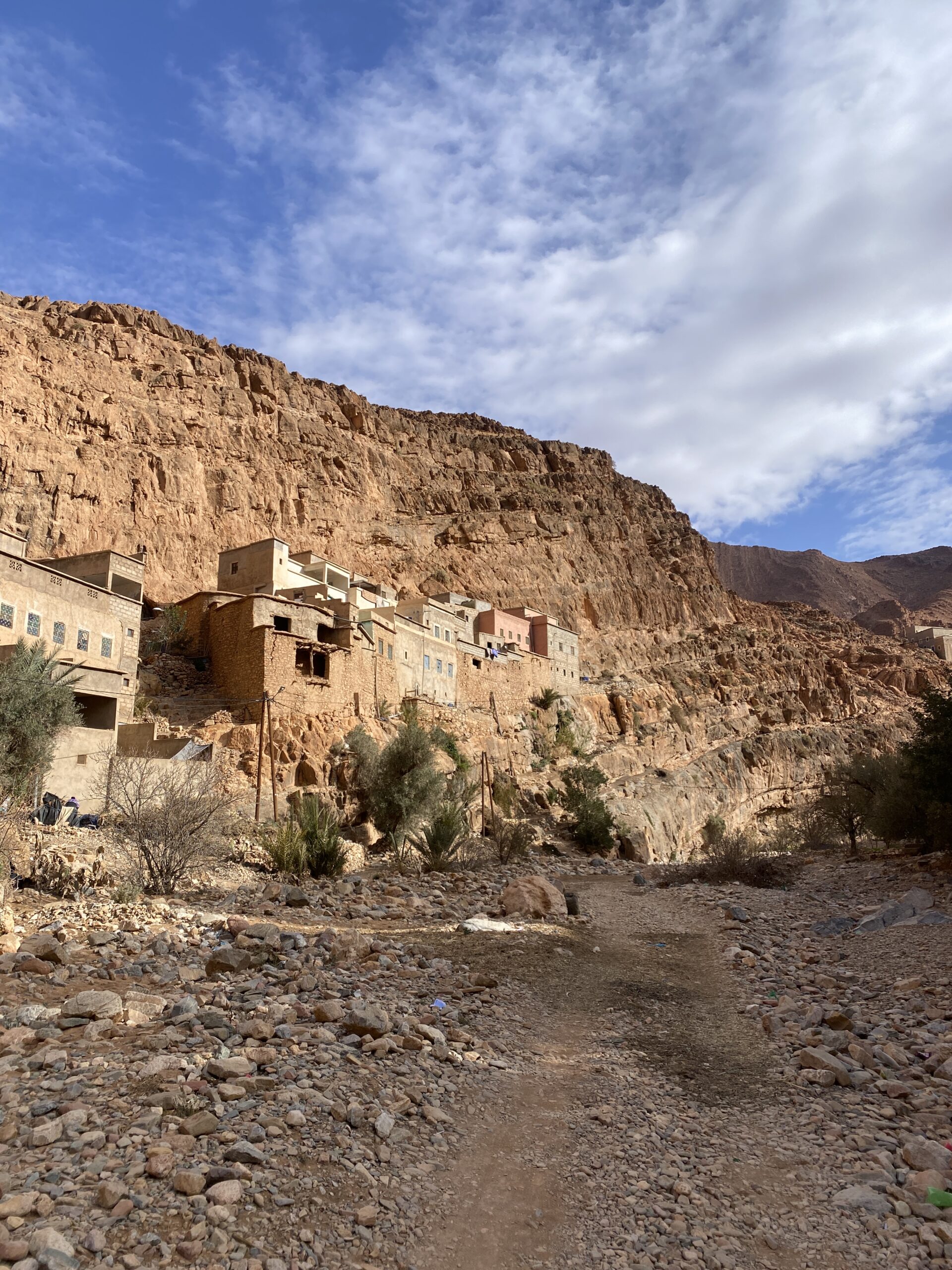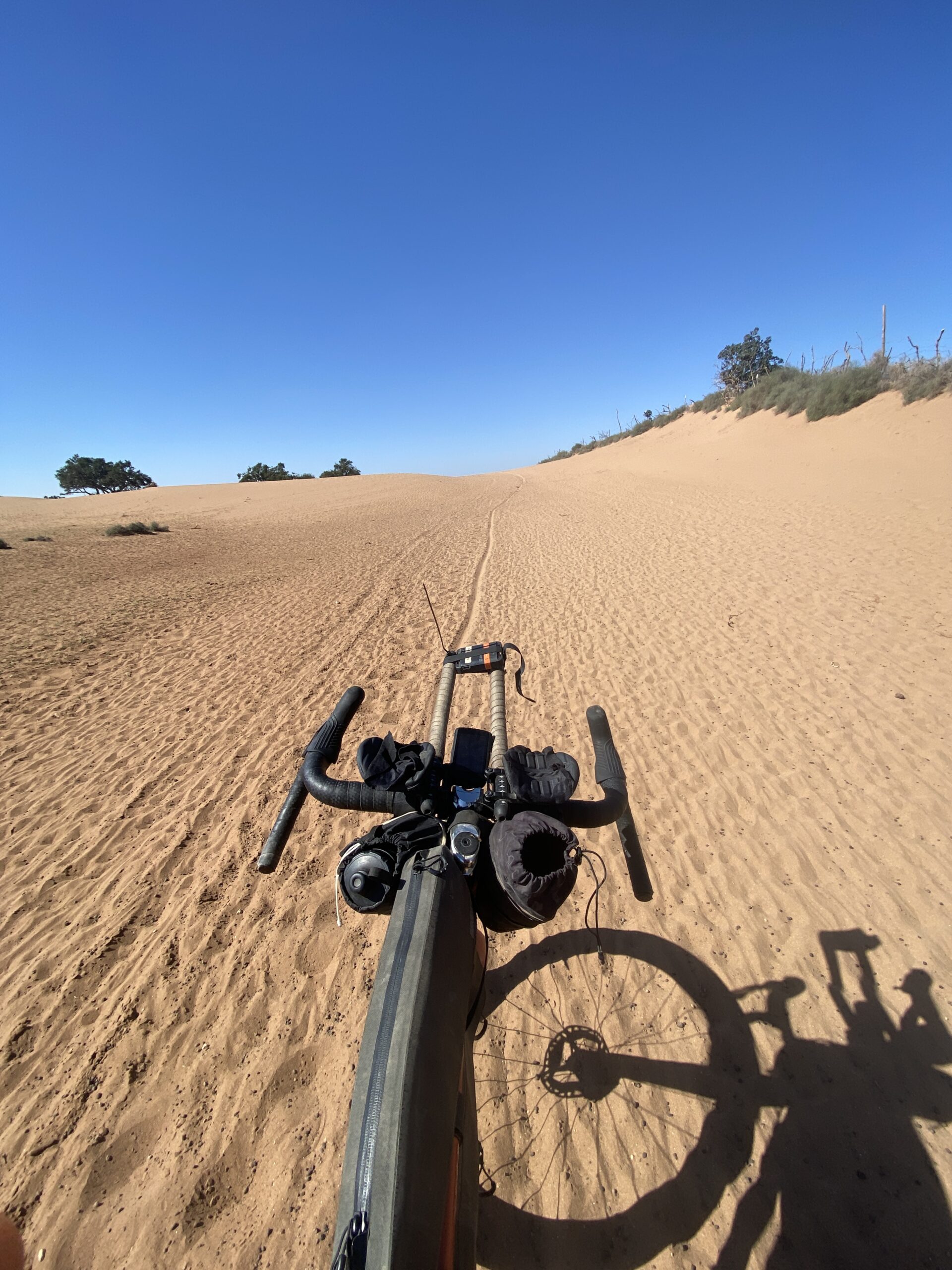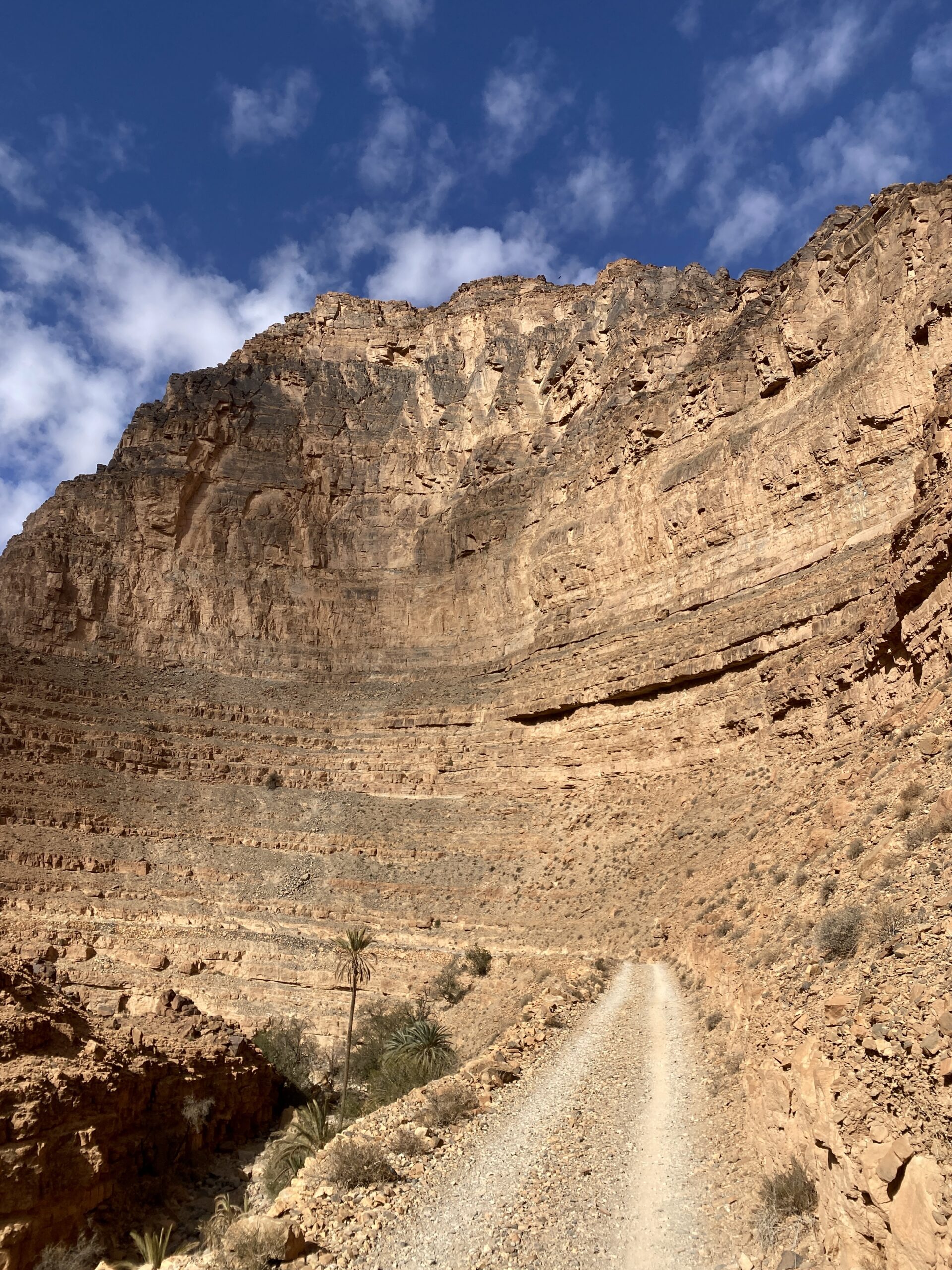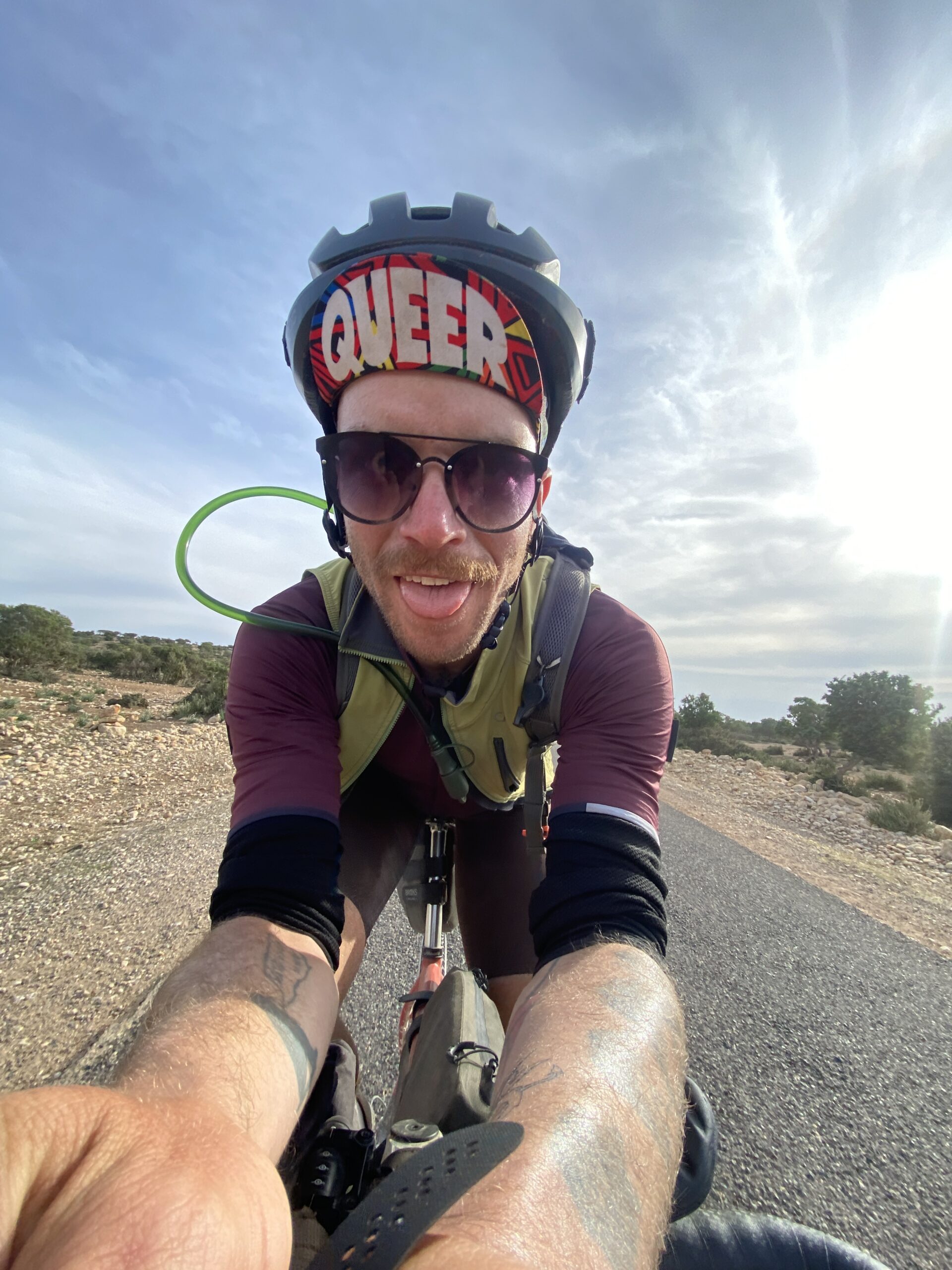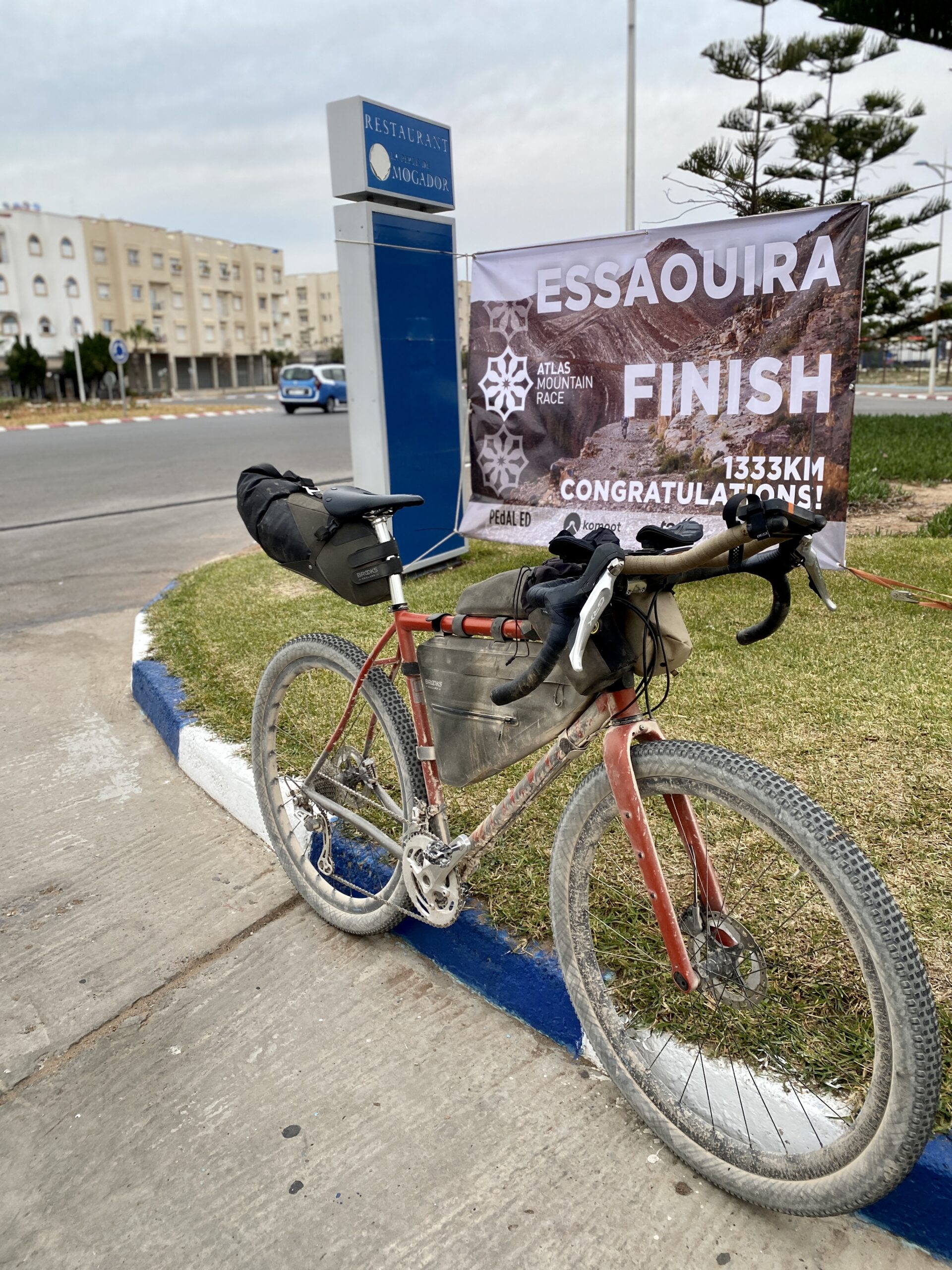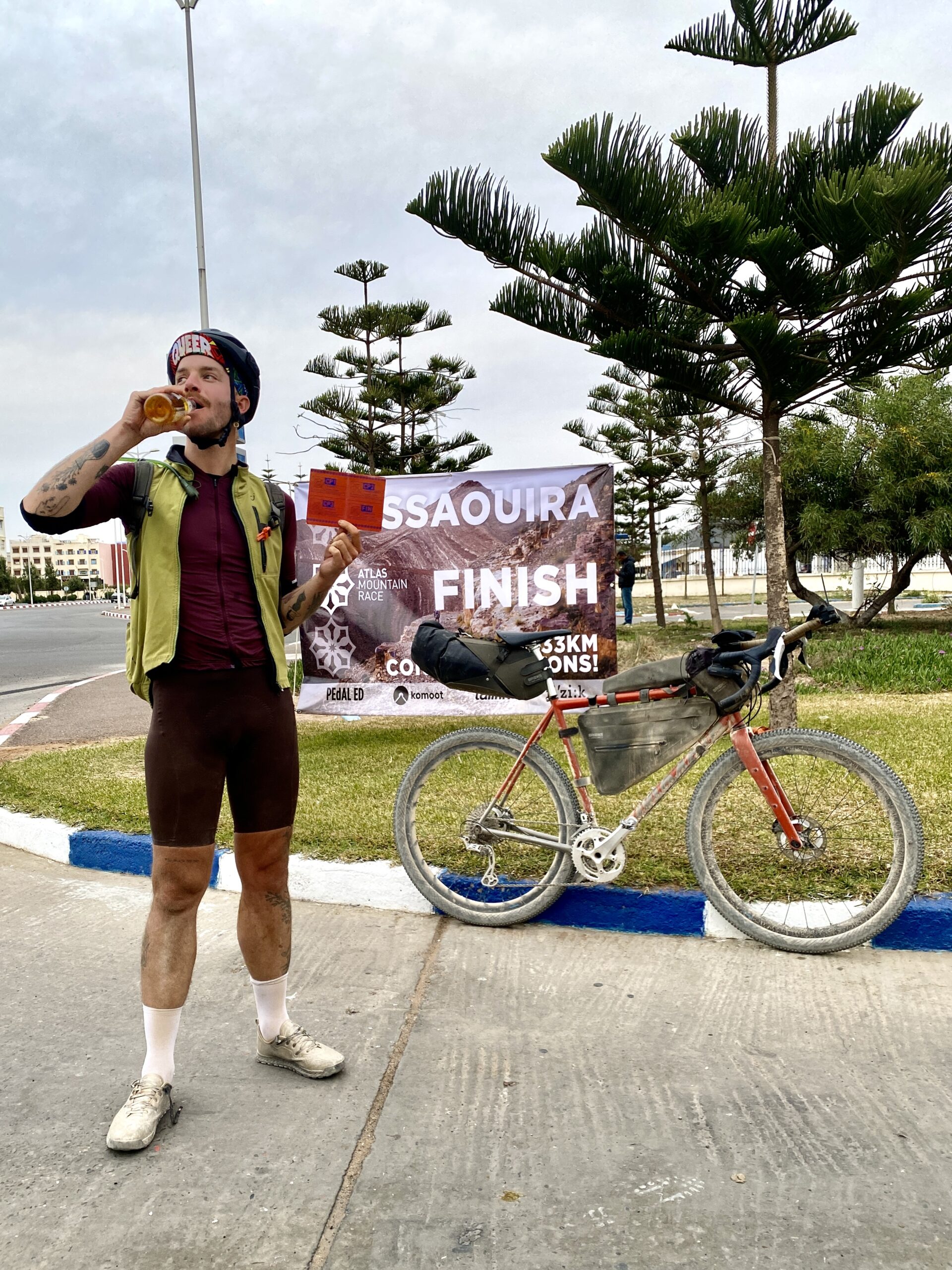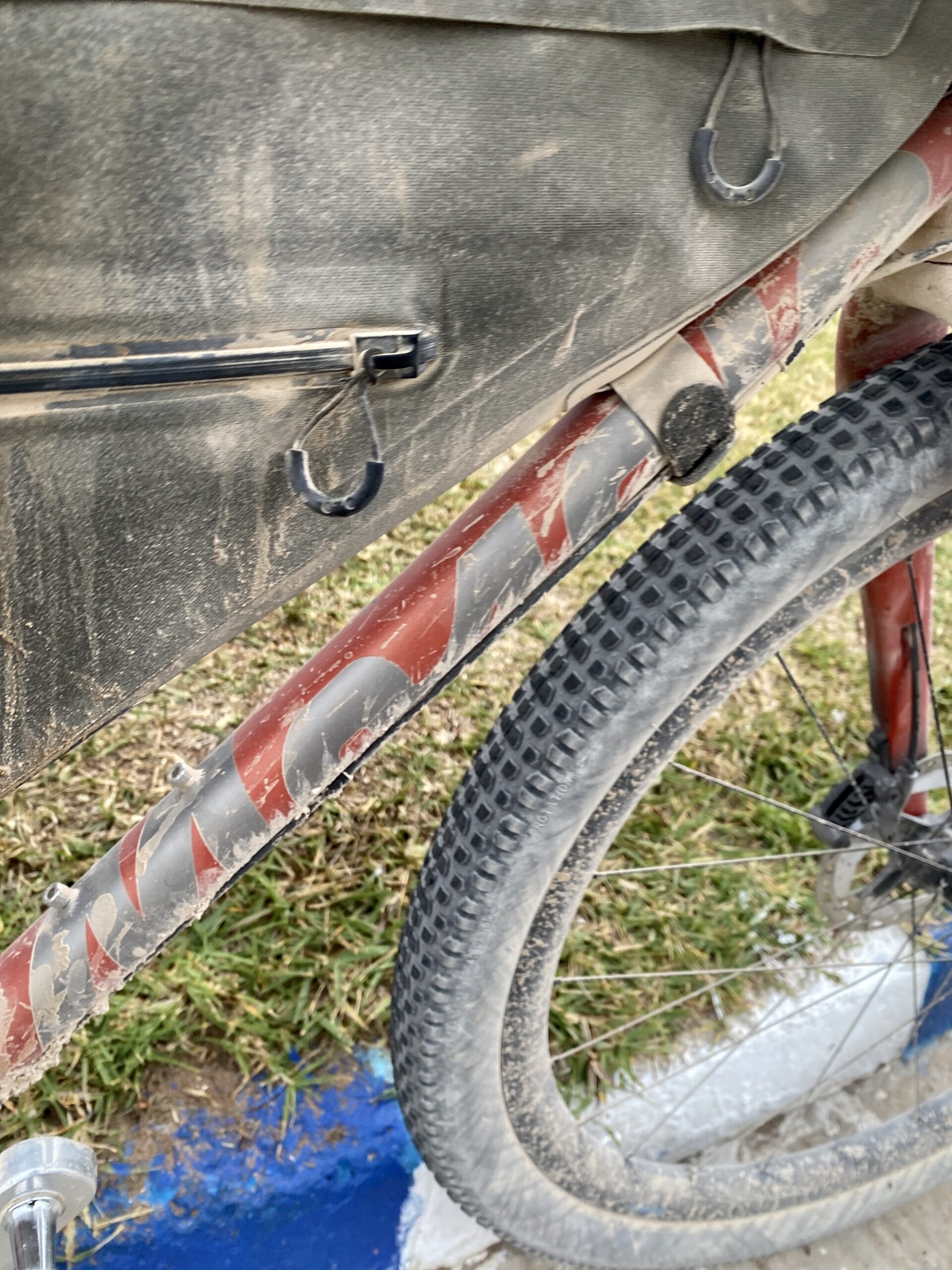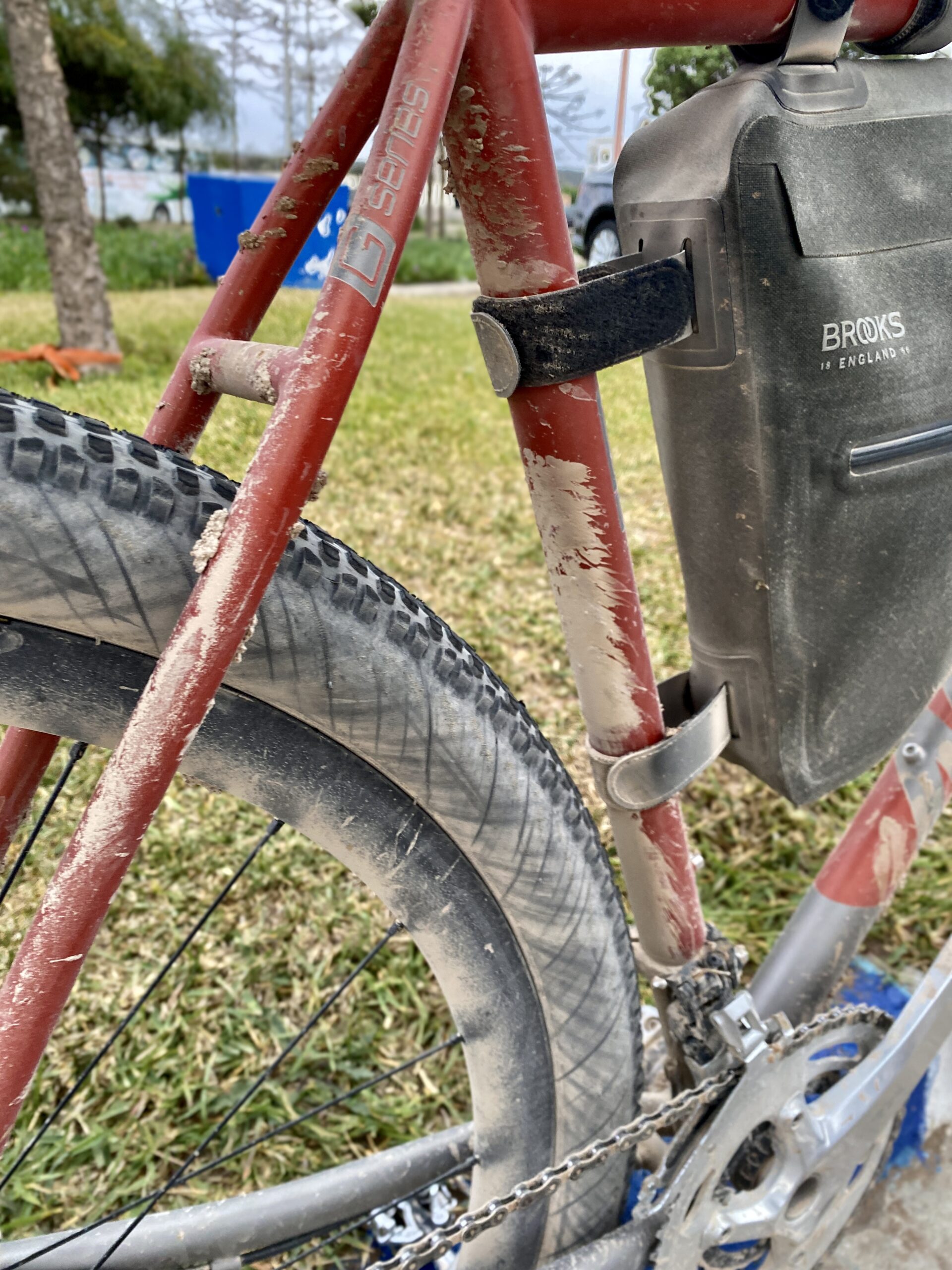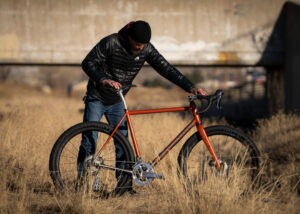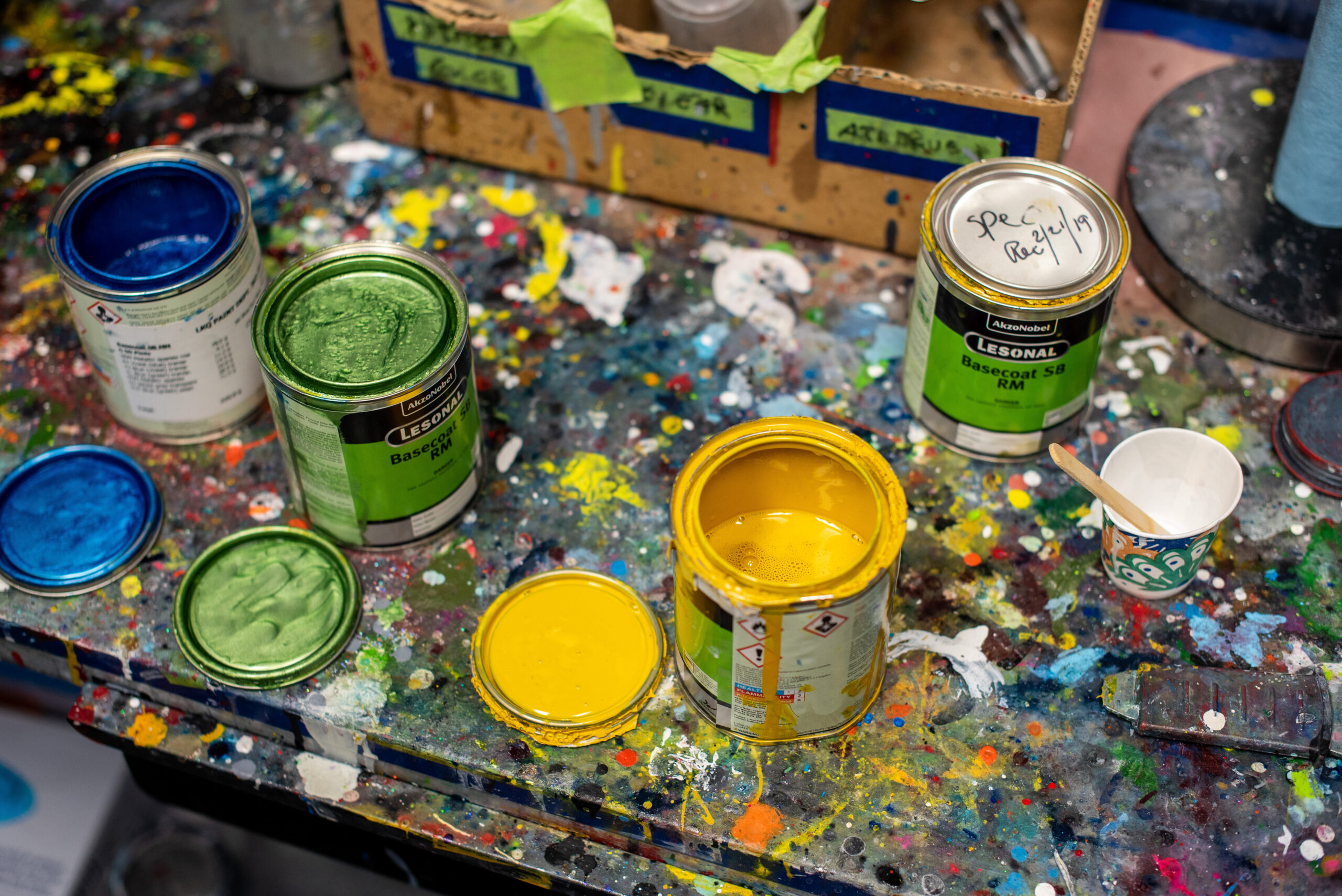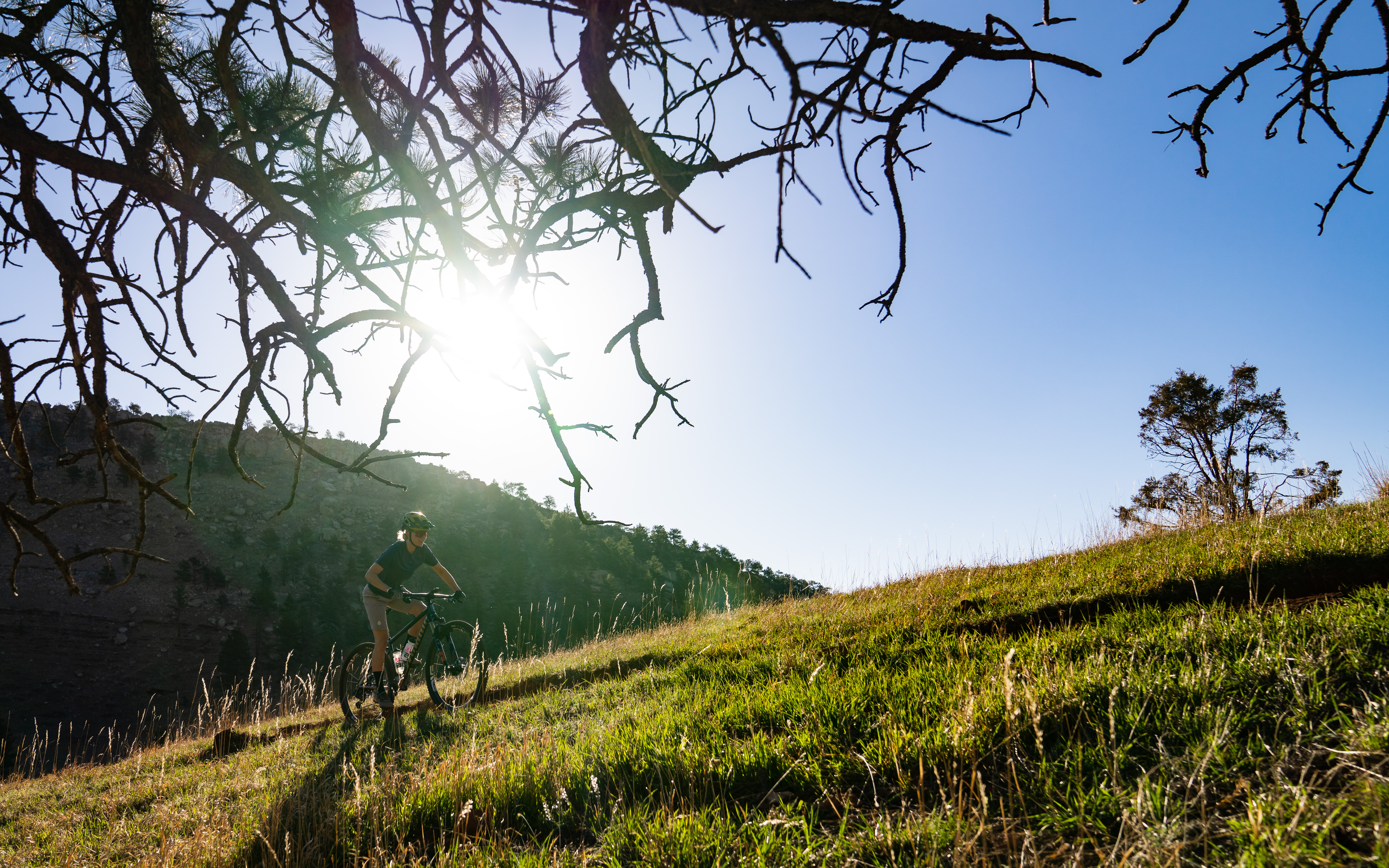I’m walking my bike up the last few steep switchbacks on the ridge of a tall mountainscape, bathed in the full moon, catching and reflecting the snow on the hillside. Gazing down the mountain on a sea of bike lights of a hundred other cyclists behind me, slowly making the same journey up the valley. As I finally reach the summit my GPS tells me it is 3.10am and a frigid -8c. No point in resting now, the options are keep moving or get uncomfortably cold fast.
Not what I was expecting from a bike race in North Africa, but we are just getting started on this years’ Atlas Mountain Race, and it turns out that cycling in the pitch black in sub-zero temperatures would be a theme throughout this race.
The Atlas Mountain Race is a self-supported, single-stage bicycle race through the mountains and desert of Morocco. Covering 1340 km (830miles) and 25,000m (82,000ft) of climbing on mostly gravel roads, single and double-track, with the occasional mule-track or two.
A few days earlier, relaxing in chaotic Marrakech, making the final tweaks to my set-up, there was a lot of talk about cold weather predictions on that first night, but none of us were expecting it to last much beyond that. But in the end temperatures were well below freezing every night of the race, with my lowest temperature on Sunday night at -10c (14f).
I was still fairly confident my set-up would serve me well, my selective layering of lightweight clothing from Velocio and riding my brand new Mosaic GT2-X, truly our maiden voyage together. I wasn’t at all phased that we hadn’t spent very much time together yet, and we had a great time getting to know each other out on the trail.
Many fellow racers throughout the experience mentioned my choice of rigid gravel bike instead of a hard-tail or full-sus mountain bike. I accepted I wouldn’t be the most comfortable on long rocky descents, but this bike was a lightweight, stealthy and versatile choice of weapon for this battle, and with 2.25’ tyres and the right handling she took on so much of this course with ease. I had zero mechanical issues during the race, one less thing to worry about.
Rolling up at the start line for registration on Friday, February 3rd, there was a quiet, nervous energy hanging over the crowd. Everyone so fresh and so clean.
After a swift evening roll-out from the south of the city and that long first climb in the full moon to the top of telouet pass, I hiked as fast as I could down the infamous 4km mule-track down the other side and made it to the first checkpoint of the race just after 5am in 52nd place, and to a busy checkpoint.
Racers passed out in rooms, inhaling hot tagines in the background in varying states of energy. I knew, for me it was a trap, the best thing for me was to keep moving and push rest to later in the day. If I’ve learned anything in previous ultra-endurance races, it’s that the first 24-36 hours are crucial. There would be plenty of time for faffing and taking breaks later.
With almost 13 hours of darkness per day, this day, like every day of my race, was actually truly fought out at night.
Sunset was around 7pm and sunrise around 8am everyday, making it a maddeningly long night shift, whichever way you chose to take it. For me, I knew my sleep system would not support a decent sleep below zero, most days I chose to sleep a few hours in the early part of the evening, when temperatures were a bit higher, and to ride through coldest parts of the night, from around 1-2am onwards. This meant I was riding up to 7 hours in the pitch black before sunrise came, by far the hardest part of this race mentally for me. I watched the sunrise everyday to huge relief.
After those first few days and cold nights I arrived at checkpoint 2 in a remote mountain valley in 42nd place, on the edge of lush palmery dug deep into a sharp canyon. Our route then whisked us off west on a longer section of rolling tarmac, towards the infamous old-colonial road. A forgotten 40km section of rocky mountain pass. It winds beautifully through the landscape, but has been made impassable to cars due to three steep collapsed points in the road caused by landslides, which you must clamber in and out of with your bike.
Another section I rode entirely in the dark. Arriving at the bottom at 8pm, the race quickly takes away the privilege of choice.
The full moon did a pretty magical job of illuminating the surrounding scenery, and the other quiet, moving bike lights off ahead and behind me reminded me I wasn’t entirely alone up here. It was unique and memorable, like some of the best (and worst) race experiences.
The strength of the mid-pack riders meant despite how alone you felt, you were never that far from other racers, someone was always catching up to you and you were always catching up to someone. That pressure kept you moving. The racers I was able to share the trail with were a warm-spirited and friendly bunch. I really enjoyed the riding we got to share together. It was inspiring to watch others endure the hardships, still pushing and looking strong, and reminding yourself that this was exactly what you were doing too.
But of course the bike also took a beating, and so did I. By day 3 the building fatigue causes aches and discomforts up and down the body. My wrists in the afternoons and my knees in the mornings. From your lower back up to your neck, with so much time for your mind to wander it finds paths to pains hiding in all different corners. My friend Mike told me before the race, “pain is just information”.
People also say it’s important to listen to your body, which I think it is, but in these ultra-distance races I think it’s more of a conversation. Sometimes we’re just trying to ignore each other, other times It’s a negotiation to constantly ask for more and promise to pay the rest back later.
The race route took us through long expansive valleys and rolling climbs, completely isolated from the towns and villages around. The remoteness and isolation of the surroundings is powerful, an ocean of rock, winding trails and mountains, melting and folding in on itself. The daylight brought breathtaking views one-after-another. The route was consistently beautiful from start to finish.
After some hours walking through sand in the Agadir plains, I spent my final night of the race climbing steep and rolling hills through the Valley of paradise and over the aptly named “Moroccan Stelvio”, a 1000m climb over 12 km of multiple switchbacks curving up a wall of mountain ridge.
A stiff wind at the summit, through the darkness you could just about make out the lights from ships way out in the Atlantic Ocean far below, and the knowledge the finish line was now almost within reach.
In the end I crossed the finish line in Essaouira at 1850 on Thursday February 9th, almost exactly 6 days after setting out from Marrakech, in 28th place. A hard fought fight through long nights and days, a testimony to an epically beautiful land and people.
The Mosaic GT-2X adventure bike was Allan’s companion of choice for the Atlas Mountain Race, proving it’s versatility and reliability day in and day out. Learn more about the GT-2X here, and start planning the next adventure of your own now.
